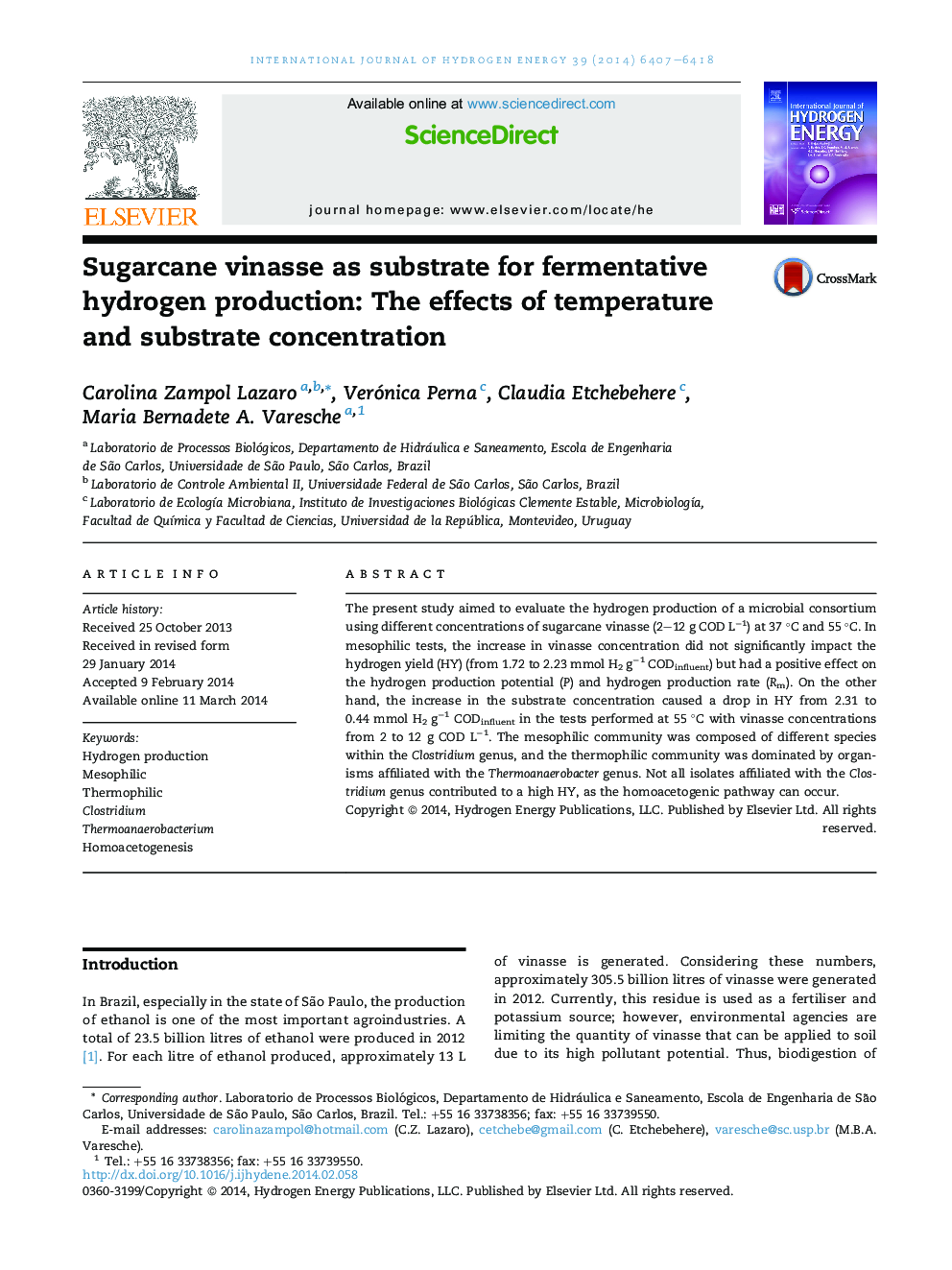| Article ID | Journal | Published Year | Pages | File Type |
|---|---|---|---|---|
| 1272834 | International Journal of Hydrogen Energy | 2014 | 12 Pages |
•H2 can be produced using vinasse as a carbon source under mesophilic and thermophilic conditions.•A higher H2 production rate was noted under mesophilic conditions.•Thermophilic H2 production was inhibited at high substrate concentrations.•Clostridium (mesophilic) and Thermoanaerobacterium (thermophilic) dominated the consortia.•Temperature was an important factor for microbial selection.
The present study aimed to evaluate the hydrogen production of a microbial consortium using different concentrations of sugarcane vinasse (2–12 g COD L−1) at 37 °C and 55 °C. In mesophilic tests, the increase in vinasse concentration did not significantly impact the hydrogen yield (HY) (from 1.72 to 2.23 mmol H2 g−1 CODinfluent) but had a positive effect on the hydrogen production potential (P) and hydrogen production rate (Rm). On the other hand, the increase in the substrate concentration caused a drop in HY from 2.31 to 0.44 mmol H2 g−1 CODinfluent in the tests performed at 55 °C with vinasse concentrations from 2 to 12 g COD L−1. The mesophilic community was composed of different species within the Clostridium genus, and the thermophilic community was dominated by organisms affiliated with the Thermoanaerobacter genus. Not all isolates affiliated with the Clostridium genus contributed to a high HY, as the homoacetogenic pathway can occur.
